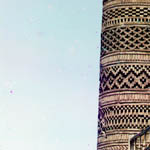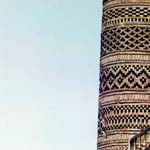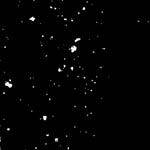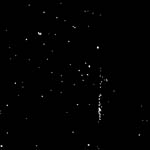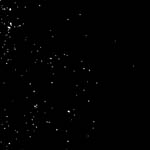Example 1
In Figs. 1,2, the results of applying the developed procedures for detecting and compensating local defects to the color registered image fragment are presented. A lot of defects can be seen in the negative triplet images including emulsion losses, emulsion degrading, and pollution. The presence of an object with texture (a tower) complicates the process of localization.
The developed automated procedure, implementing a few simple algorithms working subsequently, was applied for local defect detection. In rather homogeneous image region (the sky in the left part of the fragment) the gradient-based technique was applied separately in R, G, and B channels. For the refinement of defects boundaries, pixel-by-pixel classification in sliding window of size 200x200 pixels was used. In the textured region a technique based on evaluating pairwise differences of grayscale values in R, G, and B components in the same spatial position, was applied. After processing of mask triplets, generated by the applied techniques, in order to exclude false defect regions, the set of the resulting mask triplets was obtained (See Fig. 2 (a)-(c)). In red image component 98 defects were found, in green - 107, and in blue - 62. After detection, the developed correcting procedure was performed using the set of resulting masks. The output image is shown in Fig. 1(b).
| Home • Collection • Classification • Detection • Compensation • Examples • Biography • References |
